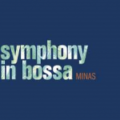Bossanaire – Holiday
Posted on Sunday, February, 12, 2017 | Comments Off on Bossanaire – Holiday
This is the second offering from the talented Portland based jazz vocal group. Bossanaire artfully mines the rich tradition of bossa nova popularized by Jobim, Sergio Mendes and Gilberto/Getz. Don’t be fooled by the title of their latest release. It is not a seasonal/Christmas album. It is a wonderfully conceived and performed set of original material that will transport you to the warmth, sun and sand of whatever beach fantasy you might...
Bossa Renova Trio – Samba Preludio
Posted on Saturday, September, 24, 2016 | Comments Off on Bossa Renova Trio – Samba Preludio
Samba Prelúdio” is a transatlantic song cycle that merges ‘Lieder’ in the European classical tradition with repertoire from Brazil that is or has become ‘classic’. All arrangements have been tailored to the multicultural musical origins of bossarenova trio’s members: the timelessly beautiful voice of Paula Morelenbaum, the warm trumpet-playing and grooving vocal percussion by Joo Kraus, and the electronically coloured grand piano by Ralf Schmid. “Melodia Sentimentale” by Brazil’s classical composer Heitor Villa-Lobos opens up the album with the trio’s ‘signature sound’: Paula Morelenbaum’s melancholic voice line floats over a delicate piano accompaniment enhanced by pulsating electronics. Joo Kraus supports with beatbox elements and a lyrical solo on morphed trumpet. The second song is a true premiere: “Prelude op. 28 No. 4” by Frédéric Chopin and “Insensatez” by Antonio Carlos Jobim have often been played in conjunction with each other to emphasize their obvious relationship. In Ralf Schmid’s sophisticated arrangement these two songs are performed simultaneously: Voice, trumpet and piano travel between Chopin’s and Jobim’s textures, bringing music traditions from Europe and Brazil together in one song. In the polyphonic Baden Powell composition “Samba em Prelúdio” the music becomes more and more beat-oriented. The urban-electro-coloured sound of “Samba da minha Terra” and the Jobim classic “O morro não tem vez” is achieved via samba percussion (by guest percussionist Marcelo Costa), John Cage-like effects inside Ralf Schmid’s piano, and a driving rap by Joo Kraus. “Ständchen” by Franz Schubert and the last track on the album, “Clara/Im wunderschönen Monat Mai” by Robert Schumann, are sung in Portuguese. The lyrics were written exclusively for Paula Morelenbaum by Artur Nestrovski, a native Brazilian who states: “The lyrics in Portuguese are closely aligned to the original version in German, but recreated in the manner of Brazilian songs, always very close to everyday speech.” After the Brazilian standard “Samba de verão” displaying Joo Kraus’s...
Symphony In Bossa By Minas
Posted on Saturday, May, 23, 2015 | Comments Off on Symphony In Bossa By Minas
Philadelphia-based husband and wife duo Minas, comprised of guitarist/vocalist/composer Orlando Haddad and pianist/vocalist/composer Patricia King, have performed together over the past three decades in a variety of formats ranging from duo to ensemble to orchestra and big band. Haddad and King have combined their Brazilian and American roots to create a sound that merges north and south with big band jazz and Brazilian bossa nova – the result is an album 10 years in the making: Symphony in Bossa. This ambitious album serves as a monumental achievement for the Brazilian culture that they have dedicated their lives to preserving and spreading. The music includes fresh takes on old classics such as “The Girl from Ipanema,” “Quiet Nights,” “Triste,” “Waters of March,” and introduces three Minas originals, “Sinal Verde,” “Amazonia,” and “Only the Moon and the Stars.” Symphony in Bossa features more than 60 musicians, including The Jazz Orchestra of Philadelphia, conducted by trumpeter Terell Stafford. The album is augmented by a string section and many guest artists, including Brazilians Leonardo Lucini (bass), Adriano Santos (drums), Zé Maurício (percussion), and Philadelphia’s own Larry McKenna (saxophone), John Swana (trumpet) and Tony Salicandro (flute). Orchestral arrangements were written by the late Philadelphia arranger and University of the Arts professor Bill Zaccagni (Bobby Ridell, Patti LaBelle), specifically for Minas. In 2004, Haddad & King began a collaboration with Zaccagni to create a large-scale work written specially for Minas, incorporating original compositions with traditional Brazilian repertoire and enhanced by big band and strings. “It is our hope that Symphony in Bossa expands the unique marriage of American big band jazz and Brazilian bossa nova into new musical realms,” states Haddad and King. The album is dedicated in memory of Zaccagni, who passed away in 2007, leaving Minas with the extraordinary gift of this music. “It represents some of his best writing,” comments Haddad and...
Made In Brazil – Elaine Elias
Posted on Saturday, May, 23, 2015 | Comments Off on Made In Brazil – Elaine Elias
It has been almost 35 years since pianist/singer/songwriter Eliane Elias moved from her homeland in Brazil to New York City She quickly began making waves as the pianist in the jazz fusion powerhouse band Steps Ahead, which included the late, great tenor saxophonist Michael Brecker. After a joint album with Randy Brecker, she began recording solo albums in the mid 80s and has been a prolific recording artist ever since. Most of her albums are on the Blue Note label, but she recently moved over to Concord. As the title suggests, she went back to her roots and recorded this album in her hometown of Sao Paulo, Brazil. While she took along her husband, bassist Marc Johnson (who has been on most of her albums), she hired some top Brazilian musicians for the session. Johnson plays bass on half of the songs, while Marcelo Mariano plays electric bass on the others. Also on the album is the multi-Grammy winning Christian vocal group Take 6, appearing for only one track, and their lead vocalist Mark Kibble sings on two others. Brazilian R&B star Ed Motta is on another. Elias and her singer/pianist/daughter Amanda team up for a duet on “Some Enchanted Night,” and she pairs up with Marc Johnson for a duet on “A Sorte do Amor.” Seven of the 12 cuts include orchestral arrangements which were later overdubbed at Abbey Road Studios, performed by members if the London Symphonic Orchestra. But they are perfectly done and never detract from the music – note how things cook along just nicely over the strings on “Voce.” From the opening moments of “Brasil,” a famous Brazilian ‘anthem’ from 1939, to the closing moments of “No Tabuleiro da Baiana,” we are all treated to a top shelf program of infectious music from Brazil, much of it permeated with a definite sexiness the likes...
Thievery Corporation “Saudade”
Posted on Sunday, June, 22, 2014 | Comments Off on Thievery Corporation “Saudade”
Every language has words and phrases that elude easy translation. In Portuguese, “saudade” (pronounced by Brazilians as “sow-DAH-djee”) is one of those. Some musicians equate it with the blues; it’s generally associated with melancholy and longing. In its most recent bio, the Washington, D.C., electronic duo Thievery Corporation defines it as “a longing for something or someone that is lost.” Though countless songs have “saudade” in the title, the condition of saudade isn’t usually conveyed through words. It’s evoked. Its wistfulness radiates through every element of the music — from the sound Joao Gilberto makes humming that iconic introduction to “The Girl From Ipanema” to the yearning melody itself to the precise chop of the rhythm guitar behind the voice. You can’t just order up saudade. There’s no setting for it on a drum machine; no software emulation available. It comes seeping through the music, between the notes, as delicate and evanescent as a May breeze. Thievery Corporation’s Eric Hilton and Rob Garza offer a vibey, transfixingly contemporary take on saudade with Saudade, their seventh full-length album. Since 1996’s Songs From the Thievery Hi-Fi, which was dedicated to composer Antonio Carlos Jobim, Thievery has explored every square foot of the intersection where bossa nova and electronic sample manipulation meet. The duo has been praised for its sleek acid-jazz dream sequences and frenetic rhythm programming. It’s delivered thick instrumental collages dotted with random curio-drawer samples, and also original songs that emphasize live vocals. (The 2000 gem Mirror Conspiracy includes a cameo by the similarly inclined Bebel Gilberto.) The new work is quite possibly the most traditional Thievery release yet: Most of its 13 songs are tightly structured verse-chorus endeavors, with contemplative vocals set against sophisticated chord sequences and minimal acoustic-electric backdrops. In contrast to what often grabs attention in electronic dance music, it’s calm, serene, uncluttered and defiantly warm. As...
The Beatles Nova
Posted on Sunday, November, 4, 2012 | Comments Off on The Beatles Nova
So many artists have covered Beatles tunes in so many ways that one might wonder why anyone would bother anymore. What possibly could there be left to say in this music? Undeterred, Chicago jazz musicians Paulinho Garcia and Grazyna Auguscik have taken on some of the most familiar works in the Beatles catalog on an appealing new album, “The Beatles Nova.” Their perspective on this repertoire sounds as fresh as the recording’s title implies, the musicians reiterating the point Thursday night at Katerina’s. Audiences in Chicago – and well beyond – already know that the Brazilian-born Garcia brings a seductive rhythmic lilt to nearly everything he sings (and plays on guitar). Auguscik, meanwhile, applies the fervent lyricism of music of her native Poland to a broad range of repertoire. Over the years, Garcia and Auguscik have formed a partnership unique in contemporary music, two voices from distinct cultures coming together in the precincts of Chicago jazz. With each season, their instruments blend a little more closely, and on Thursday night dual voices merged almost as one. Better still, Garcia’s arrangements transformed the Beatles originals and, in many ways, improved upon them. The familiarity of these songs have made them classics, but Garcia’s versions extend their chordal vocabulary far beyond anything the Beatles attempted. Here is Beatles music enriched with the sophistication of jazz harmony, the seductive sway of Brazilian rhythm and other variables. During their first set at Katerina’s, Garcia and Auguscik re-conceived every Beatles tune they touched, leaving enough of the original to render the music recognizable, but altering enough to keep matters interesting. In “Hey Jude,” for instance, Garcia re-imagined the famous melody line from the outset, meanwhile re-harmonizing it, as well. Yet the overall contour of the song remained, a Beatles standard deftly reconfigured for jazz sensibilities. The subtlety of the endeavor showed respect for the...







 The VOCAL SOUND OF JAZZ began airing on 89.5 FM (now WHRV-FM) on January 4th 1980. Originally a 30 minute program that aired on Friday evenings, the program expanded to it current 60 minute format and moved to Saturday evenings during the 90s. It was also aired over WUOM in Ann Arbor, Michigan for a five-year period in the late 1980s.
Produced and hosted by Jack Frieden since its premiere broadcast, the program has always attempted to spotlight both jazz vocal music’s post 1950s history, as well as the new singers and songs that will continue to play an increasingly prominent role in the music’s future. With the internet’s ability to attract and entertain jazz vocal fans globally, Jack looks forward to broadening the mission and reach of the “Vocal Sound of Jazz” in coming years.
Email Jack Frieden
Vocal Sound of Jazz LLC
1056 Downshire Chase
Virginia Beach, Va. 23452
Ph: 757 438 6785
The VOCAL SOUND OF JAZZ began airing on 89.5 FM (now WHRV-FM) on January 4th 1980. Originally a 30 minute program that aired on Friday evenings, the program expanded to it current 60 minute format and moved to Saturday evenings during the 90s. It was also aired over WUOM in Ann Arbor, Michigan for a five-year period in the late 1980s.
Produced and hosted by Jack Frieden since its premiere broadcast, the program has always attempted to spotlight both jazz vocal music’s post 1950s history, as well as the new singers and songs that will continue to play an increasingly prominent role in the music’s future. With the internet’s ability to attract and entertain jazz vocal fans globally, Jack looks forward to broadening the mission and reach of the “Vocal Sound of Jazz” in coming years.
Email Jack Frieden
Vocal Sound of Jazz LLC
1056 Downshire Chase
Virginia Beach, Va. 23452
Ph: 757 438 6785